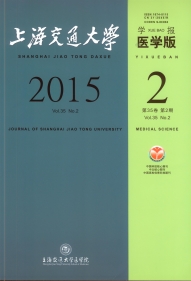Objective To investigate the effects of As2O3 on the proliferation and apoptosis of SK-NEP-1 cells of human Wilms tumor in vitro. Methods The SK-NEP-1 cells of human Wilms tumor was treated with As2O3 of 0, 1.25, 2.5, 5, and 10 μmol/L (group A, B, C, D, and E) for 24 h. The proliferation inhibition rates of different concentrations of As2O3 towards SK-NEP-1 cells were detected by the MTT assay, the apoptosis rates were detected by the flow cytometry; variations of the Bcl-2 level of SK-NEP-1 cells were detected by the ELISA; and the Caspase 3 activity was detected by the Caspase 3 Kit. Results The proliferation inhibition rates of A, B, C, D, and E groups were (3.25±1.05)%, (11.19±2.27)%, (20.72±2.21)%, (27.24±0.57)%, and (32.25±2.15)%, respectively. The apoptosis rates of 5 groups were (5.12±0.29)%, (13.42±1.03)%, (23.70±0.97)%, (32.44±0.82)%, and (40.22±1.31)%, respectively. The differences of 5 groups were statistically significant (P<0.05). The expression level of Bcl-2 of B, C, D, and E groups was lower than that of the A group (P<0.05) and the Caspase 3 activity was higher than that of the A group (P<0.05). Conclusion As2O3 can significantly inhibit the proliferation of SK-NEP-1 cells and induce the apoptosis. The mechanism may be relevant to down-regulating the expression of Bcl-2 and increasing the Caspase 3 activity.

